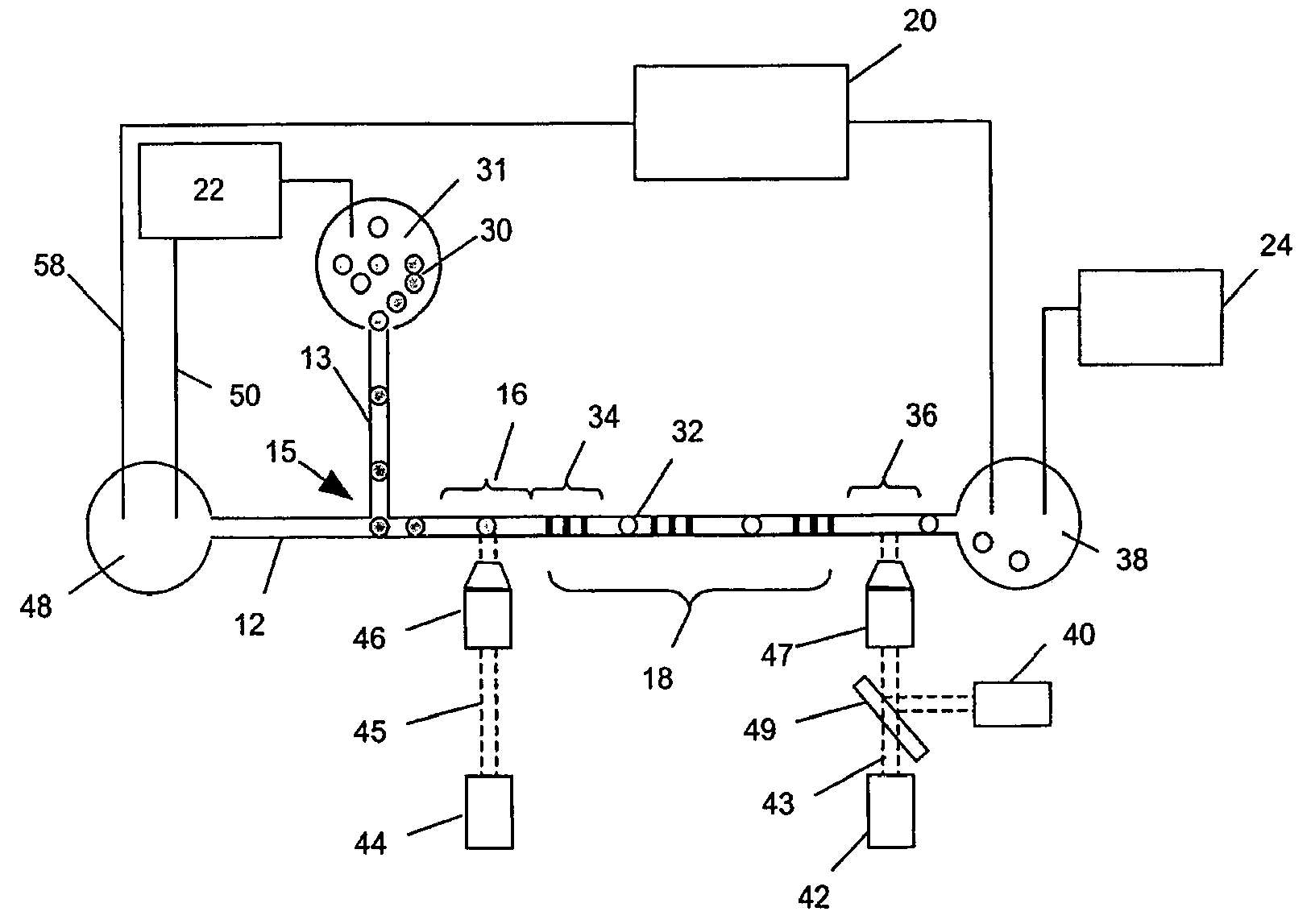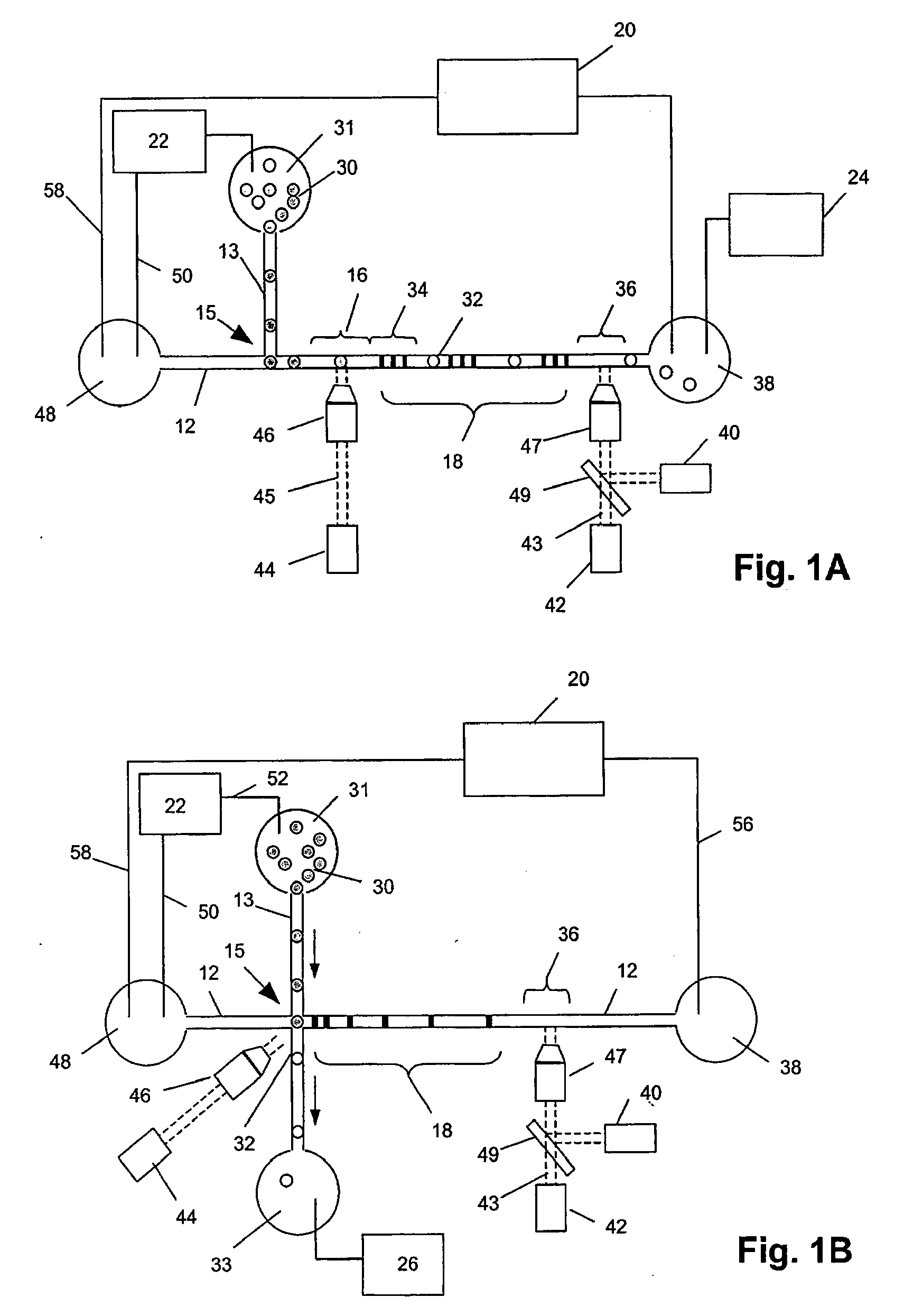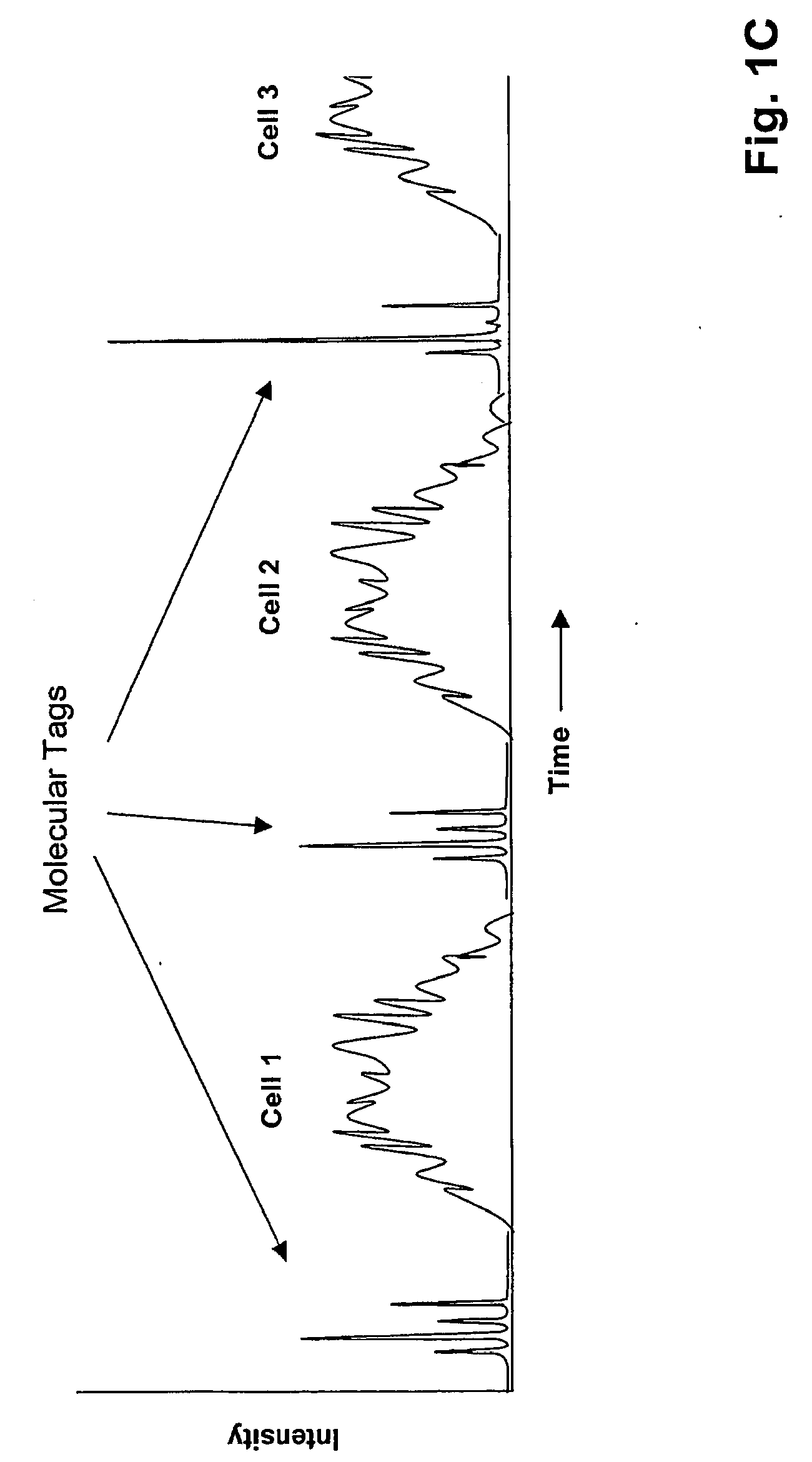Single Cell Analysis of Membrane Molecules
a single cell, membrane technology, applied in the direction of fluid pressure measurement, liquid/fluent solid measurement, peptide measurement, etc., can solve the problems of inability to measure multiple surface components or interacting surface components, lack of sensitivity to provide an accurate profile, and difficulty in applying techniques. to achieve the effect of high sensitivity
- Summary
- Abstract
- Description
- Claims
- Application Information
AI Technical Summary
Benefits of technology
Problems solved by technology
Method used
Image
Examples
Embodiment Construction
[0029]Methods and systems of the invention permit highly sensitive measurements of membrane-associated analytes of single cells because (i) molecular tags indicative of such analytes are released into a very small volume, e.g. less than 10 nL, and (ii) molecular tags are then separated by electrophoresis and detected. Because of the separation, measurements can be multiplexed and the signals generated have little or no background. As described more fully below, molecular tags may be released from binding compounds attached to membrane-associated analytes in a variety of ways depending on the cleavable linkage employed. In one aspect, reagent pairs are employed that comprise one or more binding compounds and a cleavage probe, where the cleavage probe has a cleavage-inducing moiety that generates an active species for cleaving cleavable linkages within its proximity. Such embodiments are suitable for measuring interactions and complex formation among membrane-associated analytes, such...
PUM
| Property | Measurement | Unit |
|---|---|---|
| molecular weight | aaaaa | aaaaa |
| diameter | aaaaa | aaaaa |
| volume | aaaaa | aaaaa |
Abstract
Description
Claims
Application Information
 Login to View More
Login to View More - R&D
- Intellectual Property
- Life Sciences
- Materials
- Tech Scout
- Unparalleled Data Quality
- Higher Quality Content
- 60% Fewer Hallucinations
Browse by: Latest US Patents, China's latest patents, Technical Efficacy Thesaurus, Application Domain, Technology Topic, Popular Technical Reports.
© 2025 PatSnap. All rights reserved.Legal|Privacy policy|Modern Slavery Act Transparency Statement|Sitemap|About US| Contact US: help@patsnap.com



